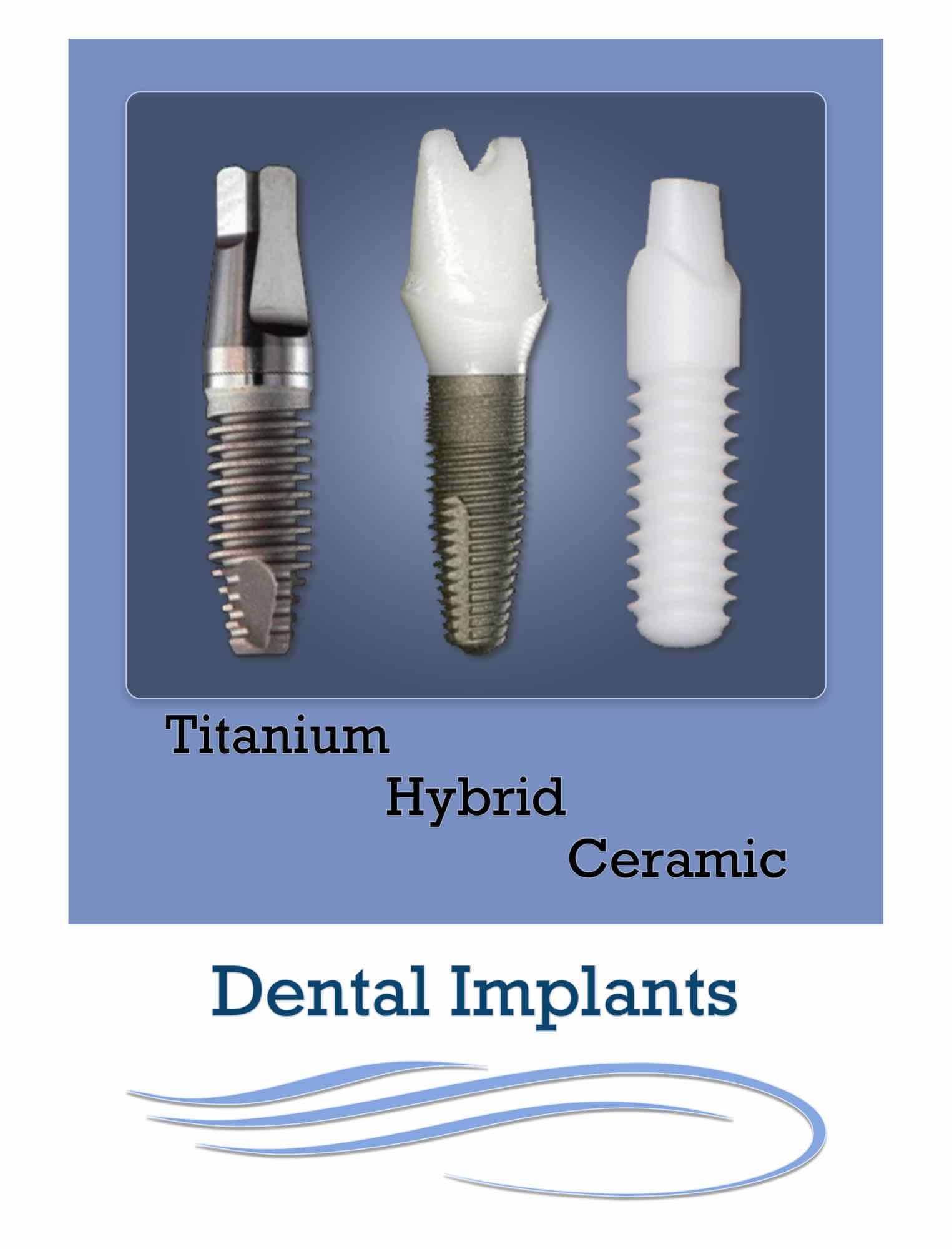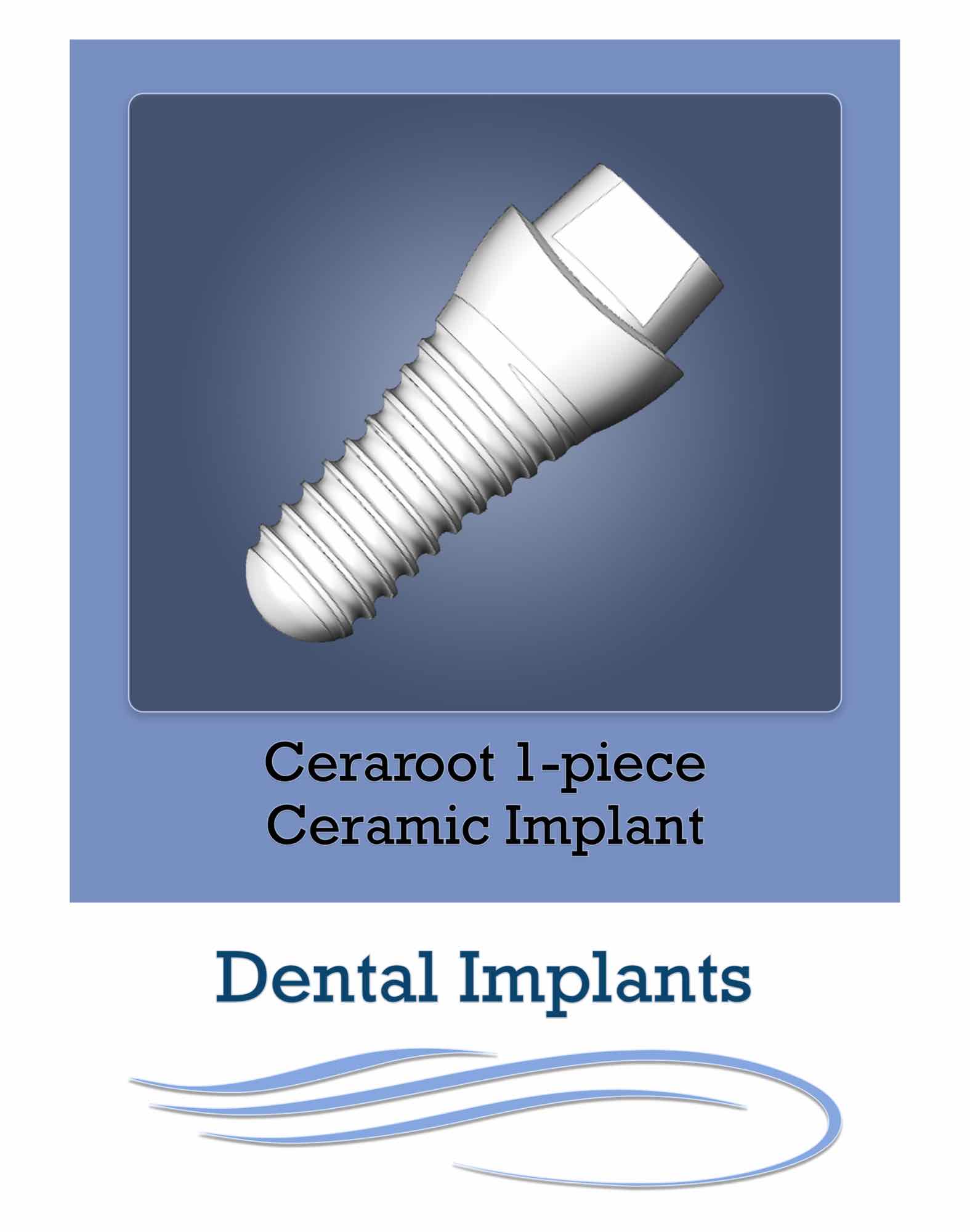Dental Implants -- What You Need to Know
If you have missing teeth or need to remove any, dental implants may be a great choice for you.
Losing a tooth can be dreadful. Missing teeth may lead to detrimental changes to mind, body, appearance, speech, overall health, and longevity. But sometimes for the sake of overall health, we must make the hard choice and remove a tooth — this is especially true in biological dentistry where removal of root canal treated teeth is a common practice. Luckily, recognizing the importance of a complete and stable bite, dentistry provides a handful of technologies to replace missing teeth: bridges, dentures, and implants.
Dental implants are the most ambitious, with the promise of long-lasting function and esthetic results. Today's dental implants can be metal or metal-free. Some applications even combine metal and non-metal parts.
Titanium Implants are versatile and have a long track record. They've been in use for about 40 years. Ceramic implants are newer, in use since about 2005 in Europe and since 2011 in the USA.
Both types are still actively researched technologies that continue to evolve. Both are available from multiple manufacturers, but since titanium has been around longer, it comes in a wider variety of brands and styles, and most dentists or oral surgeons have more experience placing titanium.

Titanium
Titanium implants are not pure titanium. They're an alloy (a mix) which almost always contains nickel, a common allergen. Titanium itself is a metal that easily reacts and oxidizes. In fact, titanium is chemically weak to acid, to oxygen, and even to fluoride. What this means is that when your implant is exposed to any of these reactants, titanium readily leaches off in the form of titanium ions, salts, or oxides. This can cause health consequences for many people. Titanium dioxide is a known carcinogen, a potential allergen, a hapten, an immune disruptor, a lymph disruptor, and more. Listed are some relevant scientific references:
◦ Titanium Allergy: A Literature Review -- NCBI
◦ General Review of Titanium Toxicity -- NCBI
◦ Biological Responses to Metal Implants -- FDA
Because of titanium's toxicity, a state of perpetual inflammation is created around the implant and in the lymph nodes. The body attempts to protect itself from this inflammatory foreign object by creating a bony layer around the implant. The jawbone "encases" the implant. And, ironically, the implant is retained (integrated) quite well. This is why titanium implants work -- due to the body's inflammatory reaction to them.
The end result is a new tooth that feels great, looks great, and restores the jaw to proper function. However, issues like chronic inflammation, the perpetual lymphatic burden of metal byproducts with subsequent immune disruption, and interference with meridians (more on this later) should not be overlooked.
Zirconia -- A Biological Solution
Zirconia is a ceramic made mostly of zirconium oxide. Unlike titanium, zirconia is non-reactive. It is invulnerable to acid, oxygen, fluoride and other potential reactants. Therefore, unlike titanium, zirconia is biologically inert. It does not inflame soft tissue or bone. It does not "force" the body to provide any sort of inflammatory or biological response.
To integrate, bone must grow around and "into" the zirconia implant. Since there's no inflammatory stimulus, bone growth and integration will occur naturally, almost passively, or even peacefully. Optimal results in this case depend on the "will" of the bone which in turn depends on a healthy body which is able to mineralize effectively.
Understanding "mineral management" is a crucial component of the biological approach to implants and oral surgery. It's a bit too involved for a short article like this one, but your biological consultation will spend plenty of time on this important topic to best prepare you for successful ceramic implants.
The end result is a biocompatible replacement tooth that not only restores proper jaw function, but does so by keeping bone and gums healthy and meridian flow open.
A well-integrated ceramic implant is arguably far superior to titanium integration.

Success Rates
Comparing titanium and ceramic implants is perhaps like comparing a fast food meal to a home-cooked meal. One is fast and easy, the other takes more work but is better for our long-term well-being. When considering titanium implants, long-term holistic health is usually not a part of the discussion. Conventional dentistry focuses on dental function, not big-picture or long-term health. Like settling for a fast food meal, titanium implants can certainly work.
Although titanium implants occasionally do fail, they enjoy a high degree of success due to their method of integration. In addition, they are versatile and strong. They are a great choice in conventional dentistry. They get the job done.
In contrast, zirconia implants are the biological alternative. They should be considered a part of your health journey and should not be used under unhealthy conditions such as autoimmune disease, osteoporosis, or other chronic conditions. Really no implants should be done under poor health conditions.
Many dentists treat zirconia and titanium as a simple preference — "Do you prefer the blue car or the red car?" If zirconia is used as a substitute for titanium with no consideration to procedure and application, ignoring the mineralization potential of the body, then failures can occur with a detrimental effect to health. Again, zirconia implants should be a component of the "holistic health journey."
Due to these differences, some statistics show zirconia has a higher failure rate. But anything can fail if used the wrong way. Considering that their integration methods are different, a blind comparison is not appropriate. If paying little to no attention to the quality of the bone or the biological protocol, of course statistics are going to be skewed. What we see is that under the right conditions, zirconia is extremely successful, and even more successful than titanium -- especially long-term, and especially in regards to health.
Conclusion
Both titanium and zirconia have high success rates when placed correctly. Placing titanium is easier with no "holistic" requirements. Placing zirconia depends on good overall health. This requires more awareness and knowledge. But when placed correctly, zirconia is more straight-forward and demonstrates amazing and healthy tissue response.
Zirconia is the healthier choice. Titanium is the simpler choice.
It is important to understand that they should not be considered interchangeable choices. They are different treatment options that belong on completely different paths. Zirconia should be a part of your biological journey. Titanium is the conventional default.






